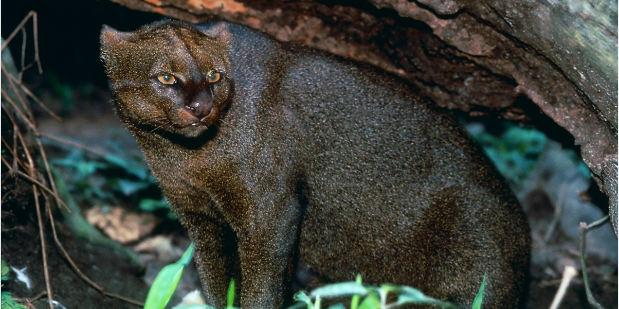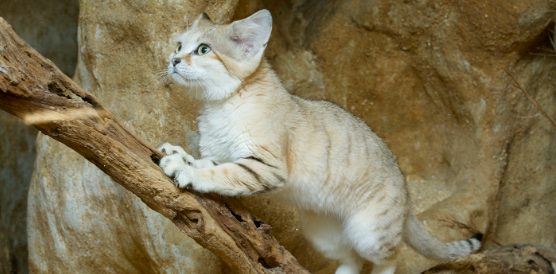Rarest Cat Type?
As someone who has always been fascinated by cats, I can’t help but marvel at just how amazing these creatures are. From their agility and grace to their sharp senses and hunting skills, cats truly are some of the most extraordinary animals on the planet.
And when it comes to rare cat types, that fascination only grows stronger. There’s something undeniably alluring about rare cat breeds.
Maybe it’s the fact that they’re so elusive, making them even more mysterious and intriguing. Or perhaps it’s the unique physical characteristics and behaviours that set them apart from more common feline species.
Whatever the reason may be, there’s no denying that rare cat types are worth exploring in greater detail. I believe that studying these extraordinary creatures is not only fascinating but also crucial for their conservation.
As human activity continues to threaten natural habitats and endanger various animal species, understanding these rare felines can offer insight into how we can better protect them for future generations to appreciate and admire. So let’s dive into a few of the world’s most remarkable rare cat breeds and see what makes them so special.
The World’s Rarest Cat Types
An Overview of the World’s Rarest Cat Types
Cats are one of the most fascinating creatures on this planet, with their agility, grace, and unique personalities. However, some cats are even more special than others.
These rare cat types possess unique physical characteristics and live in some of the most challenging environments on earth. Some of the world’s rarest cat types include the Sand Cat, Fishing Cat, Jaguarundi, and Scottish Wildcat.
The Sand Cat is a small-sized feline that lives in deserts across Africa and Asia. They have adapted to life in harsh desert environments by having thick fur on their paws to protect them from hot sand and retractable claws that help them move quickly through sand dunes.
The Fishing Cat is another rare feline found in wetland areas across Asia. They are excellent swimmers with partially webbed feet that make them efficient hunters of fish and other aquatic prey.
Challenges Faced by Rare Cats for Conservation Efforts
Unfortunately, these unique cats face many challenges when it comes to conservation efforts. One major challenge is habitat loss due to human activity such as deforestation or urbanization. Habitat loss can lead to a decline in prey availability or cause fragmentation of populations leading to isolated pockets where genetic diversity decreases over time.
Another challenge that these cats face is poaching for their fur or body parts which are used for traditional medicine practices or as exotic pets. This leads to a decrease in population numbers which can be catastrophic for already small populations struggling to survive.
To ensure the survival of these magnificent creatures, we need strong conservation efforts that focus on habitat protection, anti-poaching measures, and education programs aimed at raising awareness about these rare cat types. Without immediate action from governments and individuals alike towards conservation efforts for rare cat species like the Sand Cat or Scottish Wildcat, we risk losing these unique and beautiful creatures forever.
The Elusive Sand Cat
Surviving the Desert: A Closer Look at the Unique Adaptations of the Sand Cat
When we think of cats, we often imagine them lounging around in cozy homes or prowling through lush forests. But what about a cat that can survive in one of the harshest environments on Earth?
The Sand Cat is a rare feline found in deserts across Africa and Asia, and it has adapted in truly remarkable ways to thrive where few other animals can. At first glance, the Sand Cat may not look like much; it’s small, with short legs and ears that resemble tufts of hair.
But these physical characteristics are precisely what make it so well-suited to living in desert environments. Its small size allows it to conserve energy while hunting, and its short legs help it move quickly over sandy terrain.
The tufted ears aren’t just cute – they actually help protect the cat’s sensitive inner ear from sand and debris kicked up by windstorms. And those adorable eyes aren’t just for show – they’re incredibly large relative to the cat’s head, which helps it see better at night when hunting prey.
The Importance of Protecting Rare Species Like the Sand Cat
Sadly, despite their unique adaptations and fascinating lifestyle, Sand Cats are currently classified as “Near Threatened” by the International Union for Conservation of Nature (IUCN). They face numerous threats including habitat destruction, desertification caused by climate change, poaching for use in traditional medicines or as exotic pets, and accidental capture by traps set for other animals. It’s crucial that we take steps to protect rare species like the Sand Cat before they disappear forever.
This means supporting conservation efforts both locally and globally, encouraging sustainable land use practices that minimize damage to natural habitats, and educating ourselves about these amazing creatures so that we can appreciate their value and work to preserve them for future generations. The Sand Cat is a true marvel of evolution, and it would be a tragedy to lose such a unique and important species.
The Enigmatic Fishing Cat
Master of the Waters: Hunting Techniques and Adaptations
The Fishing Cat is a true master of the waters. This rare feline is found in wetland areas across Asia and has evolved fascinating adaptations to survive in aquatic environments.
One of the most impressive aspects of this cat is its hunting techniques. Unlike most cats, which are primarily land-based hunters, the Fishing Cat is a skilled fisherman.
It uses its sharp claws to scoop fish out of the water with precision and ease. Not only does it have incredible fishing skills, but it also has adaptations that help it thrive in watery environments.
Its webbed feet make swimming and fishing easier, while its short and flattened tail serves as a rudder for efficient movement through the water. These unique physical features allow the Fishing Cat to be an agile predator in wetland habitats.
Conservation Challenges: Protecting This Rare Feline
Despite their impressive adaptations and intriguing behavior, Fishing Cats face numerous conservation challenges due to habitat loss and degradation caused by human activities. They are also hunted for their fur or killed as pests when they prey on fish farms or poultry.
It’s crucial that we take steps to protect these rare felines before they become extinct. Local conservation organizations focus on awareness-raising efforts among communities near wetland habitats where these cats live.
They work with local residents to educate them about the importance of preserving these habitats for future generations. We need to appreciate these amazing creatures for their unique abilities as well as understand their conservation needs so that they can continue thriving in their natural habitats without disruption from humans’ actions.
The Mysterious Jaguarundi

Elusive and Mysterious
The Jaguarundi, also known as the “otter cat,” is a rare feline found primarily in Central and South America. This fascinating creature is unique not only for its physical characteristics but also for its elusive nature.
Despite being a wild cat, the Jaguarundi has been known to approach humans with curiosity, making it a favorite among wildlife enthusiasts. However, due to habitat loss and fragmentation caused by human activities, the population of these elusive creatures is declining at an alarming rate.
One of the most intriguing aspects of the Jaguarundi is its elusiveness. They are nocturnal creatures and are rarely seen during the day.
They prefer to live in dense jungle areas or grasslands where they can easily blend into their surroundings. This makes them difficult to study, which only adds to their mystique.
In addition, they are extremely agile climbers and swimmers, making them even more difficult to track down. It’s no wonder that many people have never even heard of this mysterious feline.
Unique Physical Characteristics
The Jaguarundi’s unique physical characteristics are another reason why they are such an interesting species to study. They have long slender bodies with short legs and flattened head that gives them an unusual appearance compared to other wild cats such as lions or tigers.
Their fur can range from dark brown or black to reddish-brown or grayish-brown depending on where they live. One particularly interesting characteristic of the Jaguarundi is their flexible spine that allows them to twist and turn effortlessly while chasing prey through dense vegetation or climbing trees in search of food or shelter.
Additionally, their hind legs are longer than their front legs which makes them excellent jumpers capable of reaching great heights with ease. The Jaguarundi is a truly fascinating creature that deserves more attention from wildlife enthusiasts and conservationists alike.
Their elusive nature and unique physical characteristics make them a species worth studying, protecting and preserving for future generations to enjoy. It’s time we recognize the importance of these remarkable felines and take action to ensure their survival in the wild.
The Fascinating Scottish Wildcat
Scotland is a land full of wonders and mysteries, from its stunning landscapes to its rich cultural heritage. But one of the most fascinating things about this country is its rarest feline, the Scottish Wildcat. This majestic creature has always captured the hearts and imagination of people all around the world, but unfortunately, it is an endangered species that need our help to survive.
Exploration into the Scottish Wildcat
The Scottish Wildcat is a unique feline that can only be found in Scotland. It is a subspecies of the European wildcat, and it has adapted to life in the rugged Scottish terrain over thousands of years. These cats are solitary creatures that prefer forests, woodlands, and mountainous areas where they hunt for small rodents, birds, and rabbits.
They are easily recognizable by their thick fur coat with distinct black stripes on their tail and legs. What makes these cats so fascinating is not only their beauty but also their elusive nature.
They are extremely difficult to spot in the wild due to their excellent senses and stealthy hunting skills. The best way to observe them is through camera traps or captive breeding programs.
Examination of Their History and Current Conservation Efforts
Unfortunately, over time human activities have had a devastating impact on this rare feline’s population numbers. Historically speaking, they were hunted extensively for sport or food by humans which led them towards extinction in various areas across Europe during medieval times.
Currently speaking however there have been some positive conservation efforts put forth by organizations such as Scottish Wildcat Action to help protect these animals from further decline in population size while bringing attention towards preservation goals with education initiatives as well as research on genetics which assists with tracking populations sizes based off genetic patterns found throughout different regions among other methodologies used by experts working diligently towards keeping this animal’s existence alive for future generations to enjoy. The Scottish Wildcat is an animal that deserves our attention and protection.
We must do everything we can to ensure their survival and prevent them from disappearing forever. By supporting conservation efforts, educating others about these amazing creatures, and working together towards creating positive change we can help secure the future of this magnificent animal once again into a stable population within Scotland’s forests and beyond.
Conclusion
Rare cat types are not only fascinating to study and admire, but they also play crucial roles in their ecosystems. Each of the rare cat types explored in this article has unique physical characteristics and adaptations that allow them to thrive in their specific habitats. However, many of these cats face significant threats to their survival, including habitat loss, poaching, and climate change.
It is essential that we recognize the importance of protecting these rare cat types and take action to preserve their populations. This includes supporting conservation efforts such as habitat restoration, anti-poaching initiatives, and education campaigns.
It is also vital that we continue researching these cats to gain a better understanding of their behaviors, needs, and contributions to the ecosystems they inhabit. By working together to protect rare cat types, we can ensure a healthier planet for all species.
As humans continue to alter the natural world through urbanization and industrialization, it becomes increasingly important that we take steps to preserve the biodiversity around us. The survival of rare and extraordinary cats should be a priority for us all – not only because they are beautiful creatures worthy of admiration but because they play an important role in maintaining healthy ecosystems for future generations.




